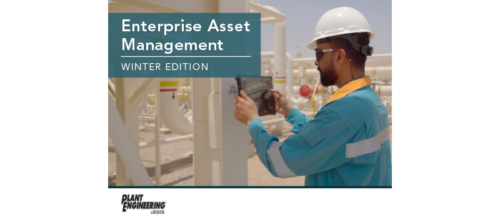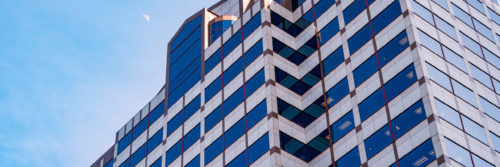Why Georgetown? Toyota builds world-class cars in Kentucky
Travel south on I-75 through the northern part of Kentucky and you’ll never know it’s there. But the people of Georgetown know exactly where the Toyota plant is, and have known for 20 years. The impact Toyota made on their lives is nothing short of life changing.
“When Toyota came to town, some people were a bit apprehensive,” said John Poff, assistant manager, general assembly at Toyota Motor Manufacturing, Inc., Kentucky. “It was a very large, global company coming into a small rural area; it might have meant big changes for the region, but TMMK’s presence has been very positive for Georgetown.”
Team members at TMMK assemble the Camry, Camry Hybrid, Avalon, Solara and 4-cylinder and V-6 engines. The plant’s manufacturing areas are stamping, body weld, paint, plastics, vehicle assembly, engine machining and engine assembly. The process starts from rolled steel sheets and ends with finished vehicles. There is a test track where randomly selected vehicles are run-tested.
TMMK produces world-class automobiles and engines; it produced the best-selling car in America (Camry) for eight of the last nine years. They are really good vehicles,” said Tom Zawacki, general manager of general administration at TMMK. “It’s no mistake that they are such high quality. Everything we do around here focuses on Continuous Improvement — whether it’s in the administrative areas such as my department, or on the shop floor in manufacturing.
“Everything translates into vehicle quality,” said Zawacki. “You have probably heard this said, but we truly believe that‘the next process is your customer.’ This helps ensure that high quality is sent to the next internal process — whether on the shop floor or in the office.”
Zawacki suggests that there may have been a kind of romance associated with the concept of having a plant in Kentucky. When the Toyoda family and the search team were evaluating potential locations, “I’m sure they had a bunch of sites in mind, but this reminded them of Japan. It has virtually the same latitude as Toyoda City; it has similar climate and rolling hills.
“But those are emotional reasons. There are very practical reasons‘why Georgetown’ — why they decided to locate here,” Zawacki continued. “We are near the crossroads of I-75 and I-64: two major interstates that provide very convenient access to our facility. We have the lowest electricity rates in the country here in Kentucky. Wehave very adequate infrastructure, a good educational system, we are close to three major metropolitan areas, being Louisville, Lexington and Cincinnati. We have a great university right here in Lexington: the University of Kentucky, the major research university in Kentucky.”
It’s no secret that incentives played a part in bringing the Toyota plant to Georgetown, KY. “At that time, (Gov.) Martha Lane Collins, who is still a dear friend of Toyota’s, really helped with the negotiation of the deal with the Site Selection Committee. She and the Toyoda family have a very strong mutual respect. And she has continued to be a friend of Toyota, and is now Honorary Councel General to Japan,” Zawacki said.
Zawacki also noted that another significant reason to locate in Georgetown was the workforce. “There’s a great work ethic in Kentucky.”
Poff agrees with Zawacki. “There are very good people in this area. The people who live here have a very strong work ethic,” Poff added. “You would be surprised how well educated a work force we have; these people are very well educated. And I think that fit part of the profile.
“Toyota spent an extraordinary amount of time and effort investigating the area. I think they saw that “if we take our plant, our vehicle, these people, put it all together, we’re going to produce something that’s going to be extraordinary,” Poff said.
Poff explained that Toyota didn’t “place four or five plants down in one big shot and start producing vehicles. It was a very methodical process. It was a very calculated effort to see what we were capable of doing, to be self-reliant, to stand on our own two feet. Now, we are Kentuckians building a world-class product.
Impact on the community
“We have a very strong philanthropy program, and sponsorship programs throughout the state,” said Zawacki. We’re a big supporter of education — all levels of education whether it be primary, secondary or post-secondary, higher education — we support a number of universities and literally hundreds and hundreds of non-profit organizations from a philanthropic viewpoint.”
Environmentalism is one of the aspects involved in being a good corporate citizen. “Wherever Toyota operates a facility, it tries to operate it with as little negative impact to the surrounding communities as possible,” Zawacki said. “Certainly, environmental practices are a big part of that.
“Don’t pollute: don’t pollute the air, the water, the ground. We have a number of air emissions that we gave back to the state, and lowered our allowable air emissions because we were implementing so many VOC reduction projects and VOC practices within our facility, such as going to water-based paint vs. solvent-based paint, reducing emissions through other means such as incineration and preventing those emissions from ever even getting out of the facility.
The plant is located in a rural area surrounded by open field and woods. TMMK is very conscious of the impact of such a high-output industrial plant placed in the middle of an uncontaminated environment.
All team members are required to attend annual environmental awareness training. “We have virtually zero waste that gets shipped to the landfill,” said Zawacki. “For example, instead of throwing away our cafeteria waste, we now collect that; we compost it into fertilizer; we have a three or four-acre farm in the back here where we grow vegetables — most of which we give away to a local food pantry and some of which we use in our cafeterias. All the fall decorations you see around the plant — the pumpkins and the corn stalks — those were all grown in our garden out back.
“We believed that we need to demonstrate to the kids in Kentucky that industry and the environment can coexist. So we came up with the concept to create our Environmental Education Center. We decided, let’s tell these stories. Let’s show these kids that industry can exist in harmony with the environment.
“We are doing a number of water recycling programs,” continued Zawacki. “We are collecting rain water from our roof. We use it in our processes. We filter it, we send it back through a reverse-osmosis filter. We can use it in our cooling towers, in process cooling and for irrigation.
“We believe that we’re doing a lot of things here that help protect the environment.”
In addition to its obvious economic benefit to the surrounding communities, TMMK is directly involved with local communities through such activities as: plant tours and an onsite nature trail, both open to the public; and Volunteers in Place (VIP) program where more than 1,000 team members are involved in many volunteer programs for educational and charitable organizations in the neighboring communities.
Energy reduction
Plant lighting is programmed to run only when production is running (except for emergency lights). Weekend steam and HVAC services are used on an only-as-needed basis. Weekend steam reduction has resulted in $1,000,000/year reduction in energy and manpower. “We are gradually replacing steam use with hot water for processes that used to use steam to make hot water, thereby reducing energy cost,” said Shoji Nakajima, PE, TMMK’s assistant manager of facilities engineering.
“We have very aggressive energy-reduction programs,” explained Zawacki. “Probably the most widely-known internally is our re-lamping project. We have high-bay lighting that uses half the electricity and produces twice the light. We save about $300,000 a year.
Education
TMMK approaches employee development in three ways: basic Toyota Way training, job-specific training and team member development. Toyota Way training includes “things like the Toyota Production System, the elimination of waste, the Toyota thinking, the Toyota problem-solving method and things of that nature,” Zawacki said.
Job-specific training enables team members to perform their jobs better. “An engineer may need a course in electronics,” Zawacki continued. “A buyer may need a course on blueprint reading, or a team member might need a course in something specific to their job.”
Team member development corresponds to Continuous Improvement. “We have a program we call‘Reach for the Stars,’ which is a college education program,” said Zawacki. “We have a variety of colleges that teach courses here onsite. We pay for our team members to take course work, and eventually get their degrees. Maybe the team member works on the line right now, butthat team member may aspire to work in the purchasing department, or be an engineer or work in human resources someday or get into management.”
The people make the culture
TMMK is a plant with strong traditional human values. The company’s core values: safety, respect, teamwork, Continuous Improvement (Kaizen), customer satisfaction, and integrity are lived by each team member — from the president down to the team members working on line, everyday. Each team member living according to these values creates an atmosphere of closeness and trust among the team members, and this atmosphere is the energy source of this plant’s ability to achieve such high level of accomplishment.
Zawacki said, “We believe that our environment is such that team members are very motivated to improve the way they do things, but also very challenged, and we provide a good work environment and give them a voice in their destiny, their jobs and their job responsibilities. That makes a big difference.
“My preference would be to continue to work at a company like Toyota, because of the very deep values and philosophies and the emphasis we place on Continuous Improvement in every aspect of our job.”
“I’ve seen quite a few changes, and a lot of growth,” Poff said. “And here we are 20 years later; it makes everybody think,‘Holy Cow! This was huge!’”
Do you have experience and expertise with the topics mentioned in this content? You should consider contributing to our CFE Media editorial team and getting the recognition you and your company deserve. Click here to start this process.



